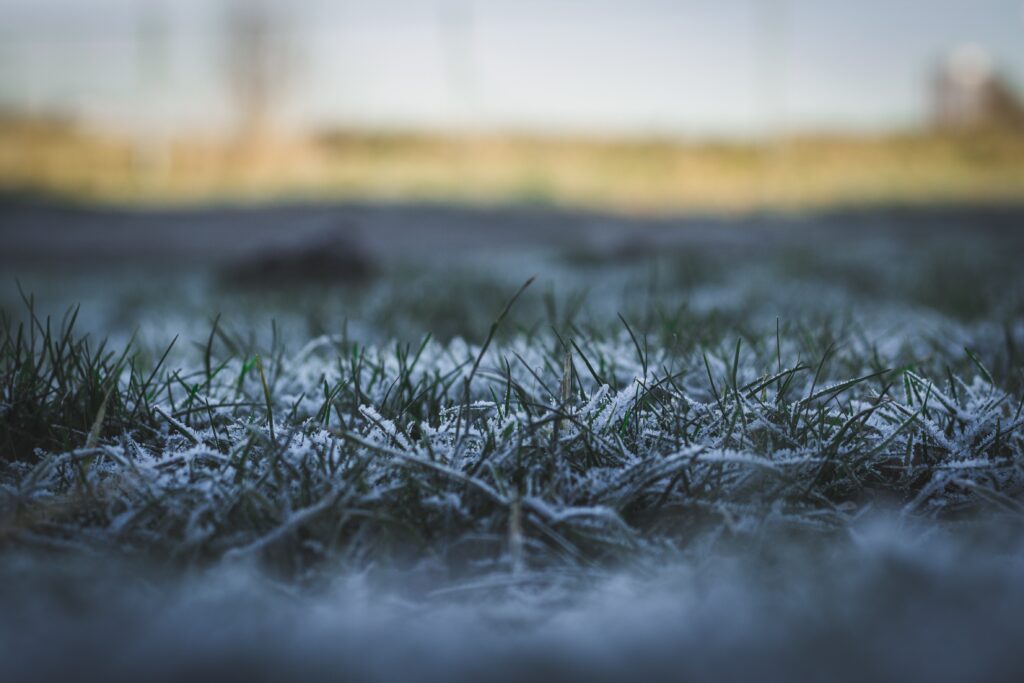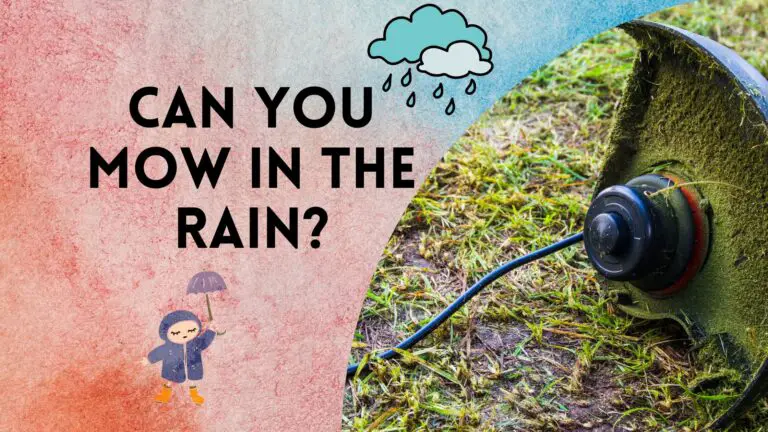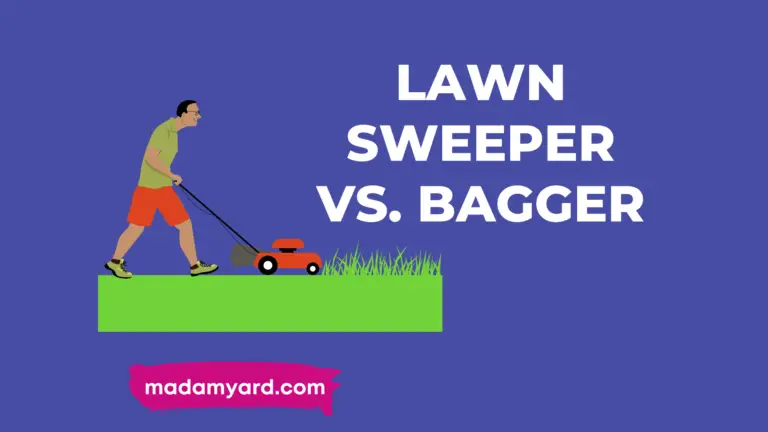Does Grass Grow In Winter?
Fall and winter temperatures bring relief from the summer heat. We all know that trees lose their leaves in the winter, and most stop flowering. However, most people are unaware of what happens to the grass in winter. Does grass grow in winter or not?
The cool temperature impacts grass, such as turning the grass color brown. You also don’t need to mow your lawn as often as in the spring and summer. But, have you ever thought about the reasons behind these phenomena?
So, does grass grow in winter? And can you grow grass in winter? Let’s find out the answers.

Does Grass Grow In The Winter?
The answer to this question depends on the location you live in. If you want to know what temperature does grass stops growing, if the temperature is lower than 40°F (4°C), then most of the grasses will not be able to grow.
At less than 40°F (4°C) temperature, the grass goes into a dormant state. It reduces its metabolism activities to a certain level so that it needs a small amount of nutrition to survive. Because of the lower metabolism, grass usually does not have any growth at that time.
However, suppose the temperature does not go under 40°F (4°C) in winter. In that case, the grass will still go under a certain level of dormancy, and because of that, grass will grow, but the grass’s growth won’t be as much as in spring and summer.
What Happens To The Grass In Winter?
Grass in winter undergoes certain interesting events within it. The grass leaves are made up of cells, and these cells have fluid. To stop forming crystals of the cell fluid during freezing temperature, the grass creates a specific fluid that reduces the freezing point to withstand the cold climate.
The grass leaves also use photosynthesis, which produces energy for the grass. During the winter, due to lack of sunlight, most grass types reduce their energy requirements by reducing their metabolism activities and entering into a dormant stage.
Will Grass Seed Survive Winter?
The answer is “YES.” Grass seeds often survive in winter. However, you must know when to plant grass seed in winter to ensure the seed’s survival.
There is a method of grass seeding in which you spread the seeds in early winter. The seeds will not sprout until spring, especially when under the snow. This method is called dormant grass seeding in winter.
So now, the famous question “can you plant grass seed in the winter” is answered. But make sure to do the grass seeding before snow.
According to TurfMutt Foundation president Kris Kiser, late fall is the best time to sow grass seed. This is especially when reseeding bare soil areas or thickening up a thin lawn.
However, dormant seeding has one disadvantage: the new sprouts may not survive if the weather warms long enough for the grass to germinate, then freezes again.
In order to germinate and grow, grass requires a constant soil temperature of 50°F (10°C) or daytime air temperatures of 60°F (16°C) and 70°F (21°C).
Which Grass Seed To Plant In Winter?
There are several options for grass seeds that grow in winter. Generally, grass has two categories based on the climate that they grow in. What grass grows best in winter?
The grasses that grow in winter are called cool-season grass or winter grass. Some grasses usually need a warmer climate but can withstand mild cold. These types of grass are called warm-season grass.
Now let’s get acquainted with some of the cool-season grass and warm-season grass.
Common cool-season grass/winter grass:
1. Kentucky bluegrass
This type of grass is frequently used on lawns. Its ability to remain green throughout the year makes it a popular choice among homeowners.
Temperate or cool climates are ideal for growing Kentucky bluegrass. It needs to be watered and fertilized regularly to keep its lush appearance. Kentucky bluegrass is also considered a low-maintenance grass.
2. Tall fescue
This grass is also known for keeping its green color in cold weather. Tall fescue will continue to grow and stay green throughout the winter months, even if it isn’t as lush as summer.
3. Fine fescue
It’s a common turf grass that grows in bunches and is perennial. This fescue variety requires little moisture and nutrients. The grass stays green all year in most areas and is drought resistant.
4. Perennial ryegrass
This is another option for cool-season lawn grass. It has characteristics of fast germination and seedling growth. It also has good cold tolerance and can withstand light shade. However, the heat and drought tolerance of the grass varies depending on its variety.
5. Creeping bentgrass
Bentgrass thrives in the cool, humid climates of the Northeast. It grows in the South, but only four species are suitable for use as turfgrass. Planting bentgrass in the fall is ideal, but it can also be planted in the winter.
Common warm-season grass:
Some common warm-season grasses are given as follows:
- Bermudagrass.
- Buffalo grass.
- Blue grama.
- Zoysia grass.
However, you need to consider some factors for planting grass in winter. Temperature, rainfall, moisture, sunlight, shade, soil conditions, and maintenance factors.
So, to get the best advice for your area, contact your local extension office. Consult your Department of Agriculture Plant Hardiness Zone Map to see what types of grass and other plants grow in your area.
How To Keep Grass Green In Winter?
To keep grass green in winter, you should have good maintenance. There are some important tips for keeping grass green in winter.
- In the fall, overseed with cool-season grass.
- Using a turf colorant.
- Clean your yard of leaves and debris regularly.
- Creating a watering schedule for the winter.
- Fall fertilizer application.
- De-icing with grass-friendly products.
- Aeration of lawns.
- Avoid walking on your lawn too much in the winter, damaging frozen grass.
Do You Water Grass In Winter?
Yes, but with less water in the winter. You only need to water your lawn about an inch each week during the fall and winter. This is about half of how much you would water it in the spring and summer.
How Fast Does Grass Grow In Winter?
In the winter, grass growth is slowed because of the colder temperatures. However, the grass will still grow; it will grow more slowly than in the summer. The length of time it takes for grass to grow a half-inch in winter is around two weeks.
Conclusion
Now you know that you have options to go with cool-season grass to keep your lawn green and alive during the winter season. Also, I hope that this article helped you to get an idea about the mechanisms inside grass that take place to survive during a cold winter.
However, as I said before, you should approach your local available agriculture institution to confirm which grass would be the best fit for your location.







